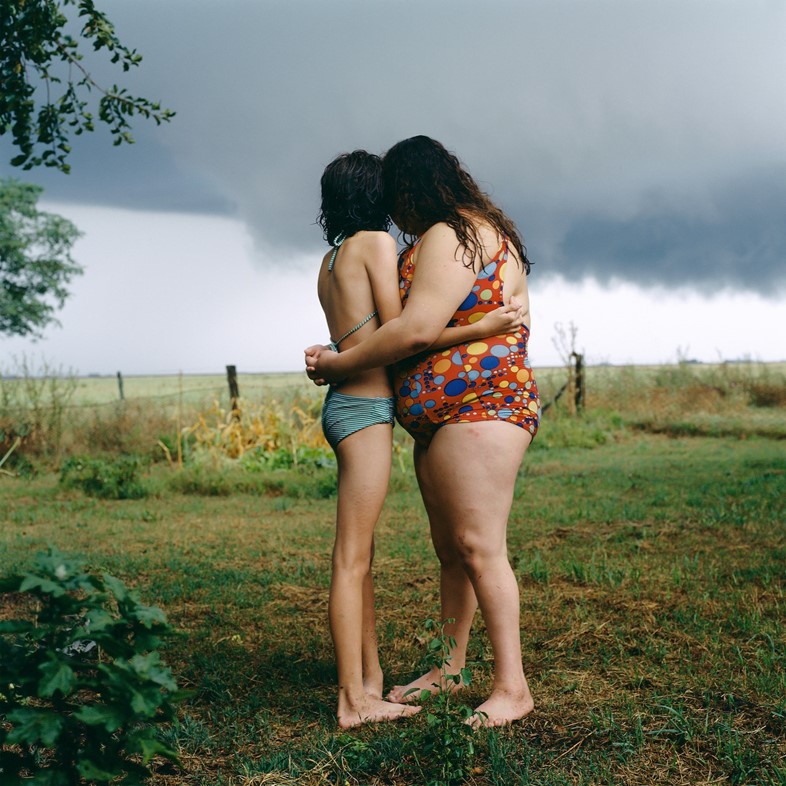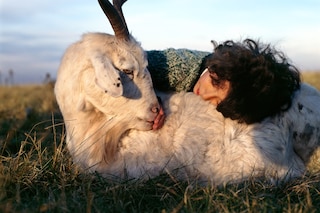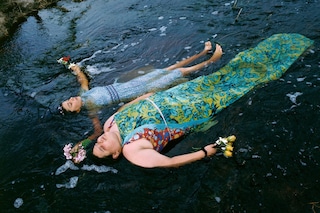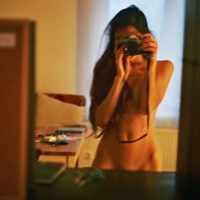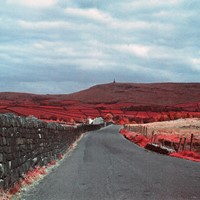We talk to the acclaimed photographer about The Adventures of Guille and Belinda, which traces the lives of two young Argentinian women as they move through adolescence into adulthood
In 1999, photographer Alessandra Sanguinetti was driving down a dirt road in rural Buenos Aires, Argentina, when she spotted “no more than two small points on the horizon”. These were, in fact, two young girls, and cousins, about ten years old, named Guillermina Aranciaga and Belinda Stutz. Those “two small points” would later become larger-than-life presences orbiting Sanguinetti’s life and work for the next two decades, and counting. At once documentary and fantasy, Sanguinetti mythologises the girls, like the Gauchos who roam the land on horseback.
At the time she encountered them, Sanguinetti was shooting her critically acclaimed On The Sixth Day, an exploration of the complexities of human-animal relationships in rural America. The girls, watching from the edge of her frames, would soon become a fascination of their own. Through Sanguinetti’s lens, we have watched them grow from girls to women, women into mothers, collecting the baggage that accumulates during a life lived.
Sanguinetti has published two books of their time together. The Adventures of Guille and Belinda and The Enigmatic Meaning of Their Dreams, shot over five years, follows the girls as they transition from pre-teens to adolescence, capturing the reverie of innocence. The second, The Adventures of Guille and Belinda and the Illusion of an Everlasting Summer, followed as they moved from adolescence to adulthood. Yet, while their likeness became world-renowned, the girls, now women, had yet to physically travel beyond the confines of Buenos Aires. Until recently, for the opening of Sanguinetti’s exhibition at the Fondation Henri Cartier-Bresson in Paris.
Featuring 52 photographs and three films, The Adventures of Guille and Belinda, is a poignant meditation on time and space, seen through the experiences of two women.
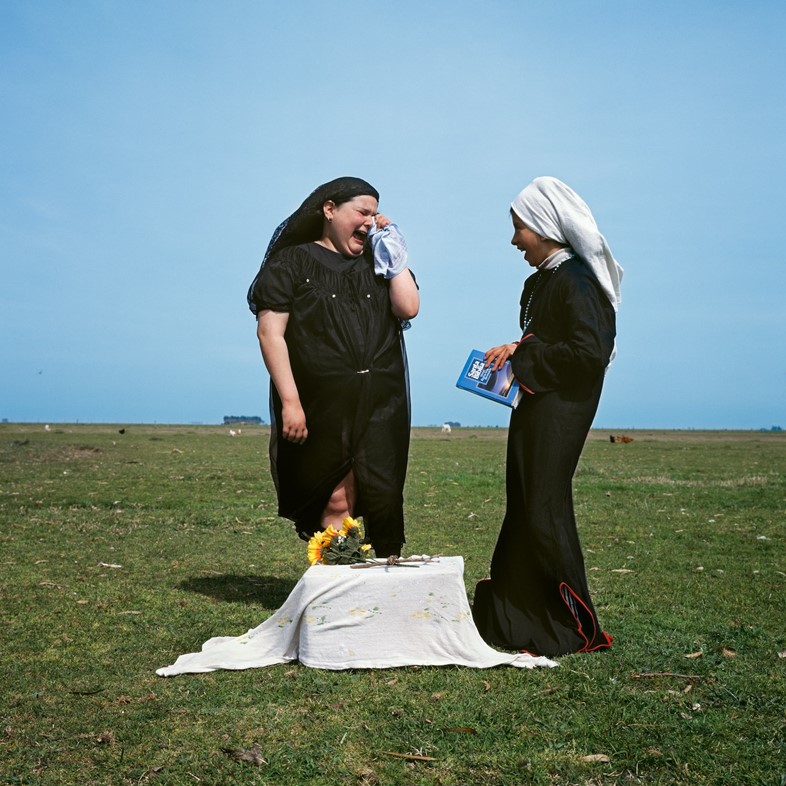
How have you seen the girls change in terms of the process of making these photographs – how their agency has grown?
Alessandra Sanguinetti: Sometimes there’s a seriousness when we talk about collaborations, they always had agency. I was just taking photographs. I was 28, I was there, I loved them, and their parents were really happy because it got them out of their hair while they were with me. They loved the attention and the chance to be able to play and pretend. It was a game.
When they got older, they became more withdrawn, and I had to get to know them again. Then they had children, so their openness has really changed through time. Like, I changed how I’d connect to them at different times, depending on what was going on in my life. It’s not a tidy progression. Now I think we’re in a good place.
Have you photographed your daughter in this way?
Alessandra Sanguinetti: She doesn’t let me. I photographed her a lot when she was little, and she didn’t really understand that she could say no [laughs]. But at one point, she said she didn’t want me photographing her. She said, ‘You ruin the moment.’ When she said that, she was 11. I never tried again.
“I’m close enough and also far away enough that I can see patterns: things that they said or did when they were little that reappear throughout their life” – Alessandra Sanguinetti
You’ve spoken previously about how the story you’re telling through Guille and Belinda sits in the context of Argentine history. How so?
Alessandra Sanguinetti: They’re in The Pampas, which is a very mythologised place in Argentina, like the American West. The Gaucho is like the cowboy figure in the States. In the beginning, they were free, heroes, and all that, and they’re still represented a little that way, but in reality, it’s a feudal system and they could never earn enough to get land, etcetera.
In Argentine history, the folklore, music, paintings, and literature have always been male-centred. When there’s a special event, the men have this really classy clothing: beautiful pants and charming hats. There’s nothing for women – they’re not really celebrated. They work just as hard alongside men. While I didn’t do the work because of that, I was conscious of it while doing it – filling a gap of young women who would never be represented in that space. In the late 90s, there weren’t as many stories about women, period.

There is something very beautiful about committing ordinary people to a book or photograph in this way. Do they ever feel overwhelmed by this dedication?
Alessandra Sanguinetti: They grew up with me taking pictures of them, and when they were teenagers, I started to have shows or reviews in Argentina, and slowly they saw that people knew them. Then with social media, Belinda doesn’t have Instagram and she’s not interested at all but Guille loves the attention. She really appreciates it. She’s interested in people outside of her place. So it’s normal for them. I think in Paris, they were amused that people were so interested in them. They thought it was fun. It takes them out of their life for a while, but it’s not the centre of their world.
Like you’ve said, it’s a game.
Alessandra Sanguinetti: It’s fun now, but it wasn’t always. The middle period wasn’t fun. Figuring out how to be a part of their lives when they were going through real stuff without being a pain in the arse. And then knowing when it’s too private, all of that. I was set limits many times. There are more moments when I couldn’t take pictures than moments when I did. I know they would appreciate [the photographs] later on but, in the moment, it wouldn’t be appreciated.
“There are those photographers, like Nan Golden, who photograph their friends and life. I’m like the opposite. People become intimate after I photograph them” – Alessandra Sanguinetti
Were there moments when you thought this would be the end?
Alessandra Sanguinetti: I felt that when they turned 14 or 15, it became really difficult to enter their space. I felt I was repeating myself doing the same images because I wouldn’t be allowed into their new space. That’s when I thought, okay, enough. But thankfully, I pushed through because I knew it would become really interesting if I went to the other side. Now I’m really into it.
It ebbs and flows like life. Your projects are quite time intensive in ways that time almost shows up as a character. Can you talk about that?
Alessandra Sanguinetti: The things you can learn through time about people and places, all the patterns start coming out. With Guille and Belinda, there’s stuff that’s not in the book, but I can see. It’s fascinating. I’m close enough and also far away enough that I can see patterns: things that they said or did when they were little that reappear throughout their life. With my daughter, I don’t know if I can see that, I’m too close.
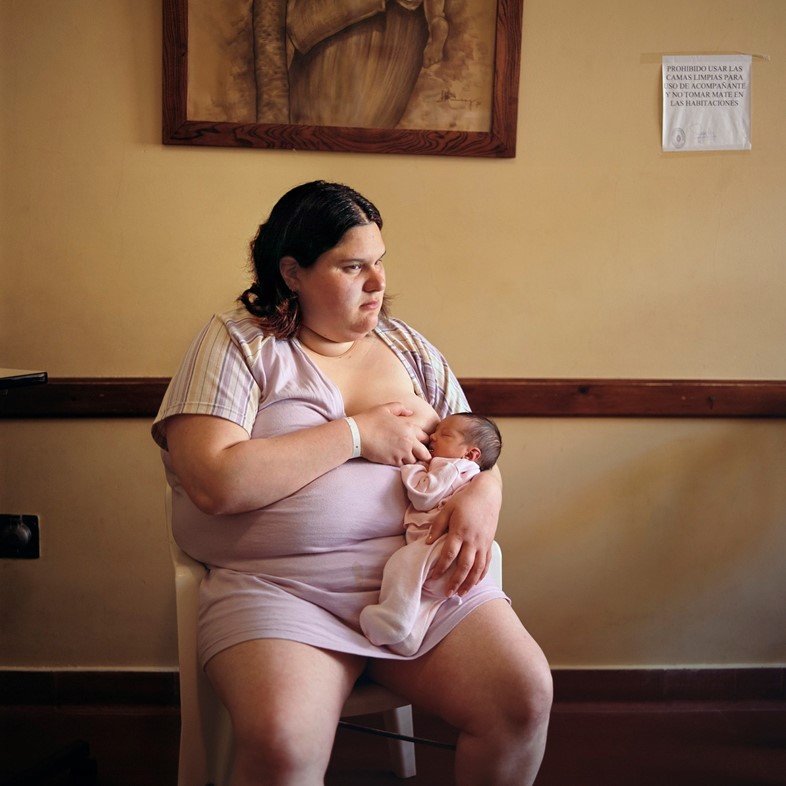
Can you tell me about the films shown?
Alessandra Sanguinetti: I’m showing small vignettes. I have 70 hours of video since I started with them because I would photograph while filming. Now I’m editing a feature-length film with that footage.
How do you think the films affect the photographs? Because they come alive, in a way.
Alessandra Sanguinetti: The only time I showed a lot of video was at a group show at the ICP last year. I felt like they were competing with each other. You couldn’t really dive into the prints when you had the video next to them. I don’t think it works to have them simultaneous. The film isn’t going to be about the photographs, it’s not about the making of the work. That’s everything I don’t want it to be. So hopefully, there’ll be two different worlds.
So will it be more of a narrative film?
Alessandra Sanguinetti: Yeah. I filmed them a lot in the beginning because they were so much freer and happier, acting out for a video camera rather than a film camera where they had to stay still. Later on, I just filmed them to film them. It had nothing to do with the pictures, just because I felt that I was missing too much with the photographs. I didn’t have a plan, and that’s why it’s such a headache to edit now.
What have you learned about the photographer-subject relationship through working with Guille and Belinda for so long?
Alessandra Sanguinetti: It’s always complicated. There are times when it does feel weird, and sometimes the friendlier I am with them, the weirder it can seem to be photographing. I know I need a little distance to photograph people. I don’t find it easy to photograph people I’m very close to if the relationship was previous to the photographs. That’s much harder. There are those photographers, like Nan Goldin, who photograph their friends and life. I’m like the opposite. People become intimate after I photograph them.
Alessandra Sanguinetti: The Adventures of Guille and Belinda is running at Foundation Henri Cartier-Bresson, Paris, until May 19, 2024.
